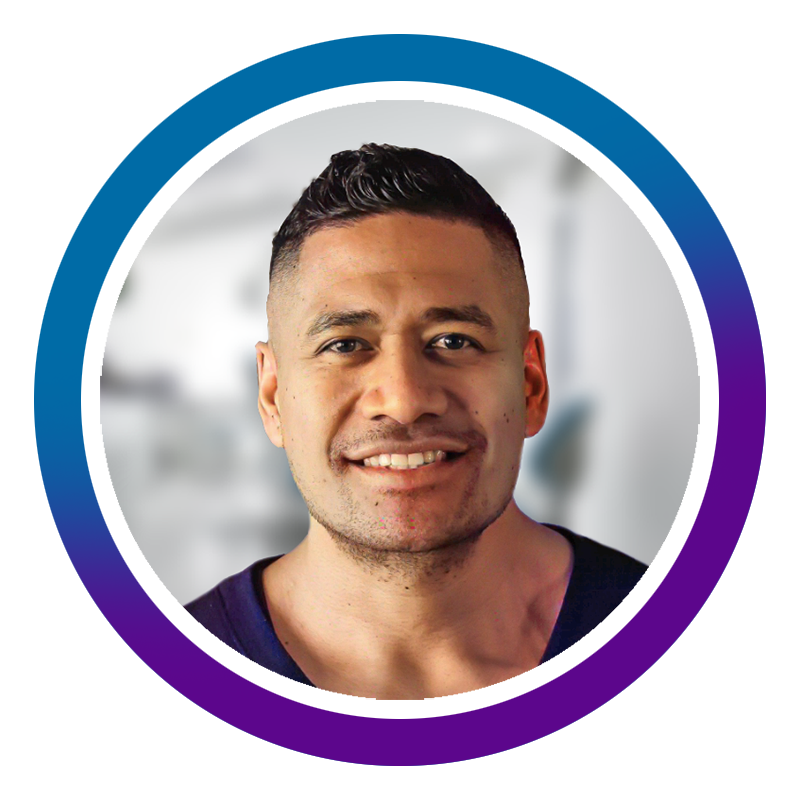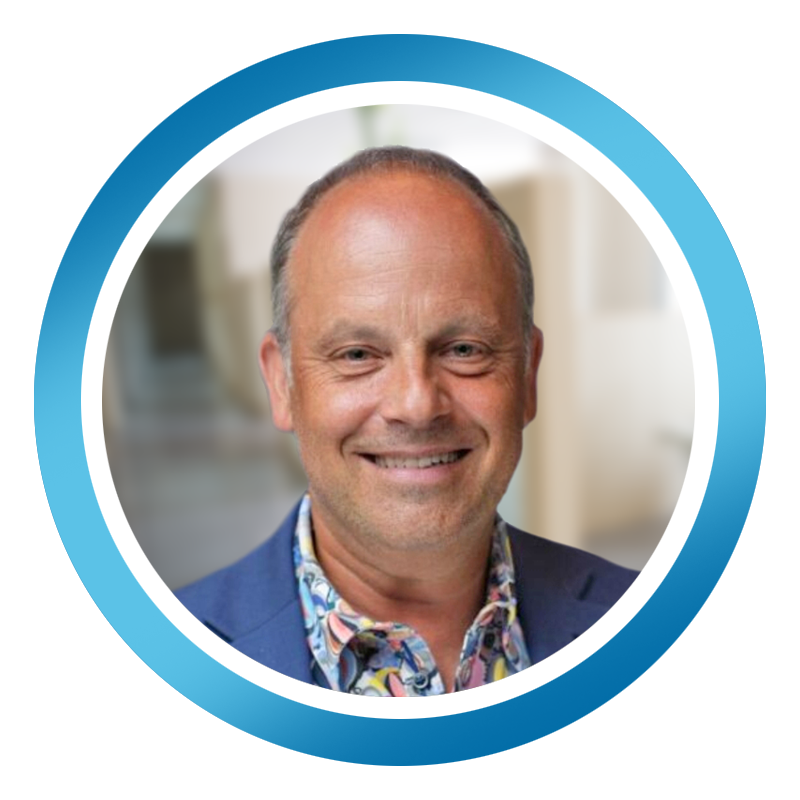
In this issue:
- How to achieve financial independence
- IN FOCUS: Entrepreneurship Beyond the Operatory
- A word about capital gains tax stability
- CDSPI Funds #1 for Performance for second year in a row
- A dentist’s journey from international graduate to practice owner
- Canada’s most stolen vehicles—and how to protect yours
- Discover your Members' Assistance Program
Financial Independence in a Time of Uncertainty: A Guide for Dentists
A career in dentistry offers tremendous earning potential—but true financial independence isn’t just about income. It’s about making strategic financial choices that allow you to build wealth, reduce risk, and create long-term security for yourself and your family. Whether you're just starting your practice or preparing for retirement, understanding the key principles of financial independence can help you make the most of your hard-earned income.
Economic uncertainty of the kind we are currently experiencing can significantly affect your financial plan. Disciplined investment strategies are crucial for long-term success. To explore these concepts, we spoke with Matthew Wright, an Investment Planning Advisor with CDSPI Advisory Services Inc., who provided insights on how dentists can take control of their financial future.
Securing Your Legacy Through a Tax Efficient Practice Exit
For dentists approaching retirement, financial independence for you and family often revolves around selling or transitioning your practice(s). Matthew Wright notes:
“A practice sale can be a major source of capital gains, but careful planning using the Lifetime Capital Gains Exemption and structuring sales through trusts can dramatically reduce taxes and preserve more for your family.”
Matthew’s Key Considerations for Practice Exit & Wealth Transfer:
- Maximize your Lifetime Capital Gains Exemption (LCGE): Begin estate freeze planning with your financial team at least 2–3 years before sale to ensure shares qualify for the $971,190 (2025) exemption.
- Use family or alter ego trusts: Shift growth in practice share value to a trust, sheltering future appreciation from tax upon sale.
- Stagger share redemption: If selling to associates, structure buy‑backs over several years to smooth your personal tax bill.
- Fund a buy sell agreement: Ensure you and your partners have liquidity vehicles (like key person insurance) to facilitate quick transitions without distress sales.
- Educate your heirs: Host a family wealth workshop to explain the practice’s valuation, tax implications, and responsible stewardship of assets.
- Plan post sale cash flow: Map out personal and family expenses against after-tax sale proceeds, pension entitlements, and investment income.
- Align philanthropic goals: Consider charitable gifting or creating a family foundation to reduce your taxable estate while supporting causes you care about.
By taking a multiyear approach that focuses on tax efficient structures, educating the next generation, and clear cashflow planning, you can convert decades of dental practice success into enduring financial independence for you and your family.

Building Wealth Through Multiple Streams of Income
Relying solely on income from your dental practice can leave you vulnerable to financial shocks—from economic downturns to illness or burnout. Building multiple income streams not only protects against those risks but also creates new paths toward financial independence and professional fulfillment.
Dentists are uniquely positioned to diversify. You have trusted patient relationships, business acumen, and specialized knowledge. These powerful assets can be applied to ventures both within and beyond dentistry.
Here’s how dentists across Canada are using their expertise to build wealth in new and creative ways:
Real Estate Investments
Rental properties can provide reliable monthly income and long-term appreciation. Some dentists use real estate to create retirement income, while others leverage it for tax planning or as a buffer during transitions like parental leave or semi-retirement.
Investing in the Markets
With the right strategy, corporate investment accounts can become engines of growth. Dentists often invest retained earnings from their professional corporations into portfolios designed to generate capital gains or dividend income while deferring personal taxes until withdrawal.
Expanding Your Practice
Growth within dentistry remains a proven wealth strategy. Opening a second location, bringing in associates, or investing in specialized technology (like CBCT scanners or sleep appliances) can unlock new revenue streams while reducing your reliance on chairside hours.
Board Appointments and Governance Roles
Joining a board of directors of a healthcare organization, non-profit, or private company can be a valuable and rewarding source of income. Board seats often come with annual retainers or meeting fees, while also expanding your professional network and influence.
For many dentists, board work offers a way to give back to the profession or community, stay intellectually engaged, and contribute strategically without clinical demands. Whether you're advising on patient care policy, organizational strategy, or technology implementation, your expertise is both needed and respected in these roles.
Whether through real estate, investing, expanding your practice, or launching something entirely new, building multiple streams of income puts you in control of your financial future—and opens the door to greater independence, impact, and freedom.
IN FOCUS: Entrepreneurship Beyond the Operatory
Some dentists are combining personal passions with business acumen to create entirely new income sources:

Dr. Kamea Lafontaine, a general dentist in Alberta, is leveraging his lived experience and cultural knowledge to create tech solutions that serve both the dental and Indigenous communities. He co-founded SafeSpace Networks, a reporting platform for patients experiencing racism in healthcare. He’s also the founder of Intelli Network, a software firm developing systems to streamline practice operations and improve patient outcomes.
“I realized I didn’t need to choose between practicing dentistry and building things that support my community. I could do both.” Dr. Kamea Lafontaine
He is currently working on an animated series to inspire Indigenous youth to pursue careers in dentistry—combining storytelling, education, and media entrepreneurship. His income is now diversified across clinical practice, tech ventures, and creative projects rooted in cultural advocacy.

Dr. Mark Eckler, an orthodontist based in Ontario, took a different route. As he approached mid-career, he co-founded InsideDesk, a software startup that automates insurance workflows for dental practices. His goal was to solve a widespread operational pain point he’d encountered firsthand and create a scalable business outside of traditional clinical work.
“As a dentist, you solve problems every day. I realized those same skills could apply to building a company.” Dr. Mark Eckler
Mark now balances part-time clinical hours with startup leadership, and his income is split between his orthodontic practice and his growing SaaS venture.
These real-world examples reflect a larger trend: dentists who pursue multiple income streams not only improve their financial resilience but also gain flexibility, reduce burnout, and rediscover creativity.
As Matthew Wright notes: “Dentists often don’t realize how transferable their skills are. Leveraging those abilities into other ventures and not just more clinical work can be the difference between needing to work and choosing to work.”
QUICK POLL
What percentage of your income do you derive from activities “outside the operatory”?

Wealth Transfer Strategies to Future Generations
Building wealth is a cornerstone of financial independence but preserving that wealth for the next generation is how you create lasting impact. For dentists, this conversation is especially important if you own your practice, hold investments inside a professional corporation, or plan to pass down substantial assets to your family.
At the Ontario Dental Association’s Annual Spring Meeting in May 2025, CDSPI hosted an expert panel that focused in part on wealth transfer planning for dentists. One theme that emerged was that wealth and estate planning is about much more than having a will. It's about ensuring your financial legacy is protected, tax-efficient, and understood by those who will inherit it.
As Jordan Weinberg of our accounting and tax partners at MNP put it: “There’s a saying that wealth rarely survives three generations. That’s not just because of taxes. It’s because people inherit money without inheriting the knowledge or the values that built it.”
Here are some of the key strategies our panelists agreed dentists should consider as part of a thoughtful wealth transfer plan:
Start with a Will and Build from There
A will is essential, but not sufficient on its own. Dentists with more complex estates – including business assets, real estate, or blended families – should consider using trusts to control how and when assets are distributed.
Trusts can help:
- Protect assets from creditors or marital breakdowns
- Ensure minor children or vulnerable heirs are supported responsibly
- Reduce probate fees and maintain privacy
Use Tax-Efficient Structures
Transferring wealth can trigger significant taxes if not planned correctly. Incorporate strategies such as:
- An estate freeze to lock in the value of your corporation shares and pass future growth to your children
- Use of the Lifetime Capital Gains Exemption (LCGE) if your practice qualifies
- Charitable giving strategies to reduce taxes while supporting causes important to your family
Use Life Insurance as a Planning Tool
Permanent life insurance is often overlooked in wealth transfer discussions. It can provide a tax-free payout to your heirs, cover estate taxes, and even serve as an equalizer for children not involved in your practice or business. As Matthew Wright notes: “For many dentists, insurance isn’t just about protection, it’s a liquidity tool for the estate.”
However, the panel agreed that the implications for corporately owned permanent life insurance, specifically whether it’s held within a Dental Professional Corporation or a holding company, should be discussed as part of a broader estate planning process with your financial and legal advisors.
Preparing the Next Generation
Perhaps the most important strategy isn’t financial—it’s educational. Wealth transfer is most successful when heirs understand how to manage what they receive.
Panelists emphasized:
- Talking openly with children about values, responsibilities, and decision-making
- Introducing them to your financial advisor or accountant
- Encouraging financial literacy from an early age
The goal isn’t just to leave money behind. It’s to leave behind the mindset and tools to handle it wisely.
Wealth transfer planning shouldn’t be left to your final years. It should evolve alongside your financial goals and family circumstances. Working with an advisor can help you build a plan that protects your legacy while empowering the next generation to continue growing it.
A Word about Capital Gains Tax Stability: A Strategic Advantage for Dentists
Recently, Prime Minister Mark Carney confirmed that his government will not proceed with an increase in Canada’s capital gains tax for now. This decision has significant implications for dentists, both as business owners and as investors. Dentists often face dual exposure to capital gains—first through the sale of their practices, and second through their personal investment portfolios. The fact that capital gains tax rates remain unchanged provides a strategic window of opportunity for optimized wealth planning.
As Matthew Wright explains: “The stability in capital gains tax allows dentists to plan practice sales and transitions more effectively. Without the threat of increased tax liabilities, you have more flexibility in timing your exit strategy or reinvesting the proceeds.”
What are the implications for dentists?
Many dentists use the sale of their practice as a crucial component of their wealth-building strategy. Without an increase in capital gains tax, selling a practice now means lower tax liabilities, enabling you to retain more of the proceeds. This is particularly important for those nearing retirement or considering a transition from active practice to semi-retirement.
In addition, rule stability makes long-term investment strategies more efficient. “Stable capital gains tax rates help maintain higher after-tax returns, making it easier to grow your investment portfolio over time,” Matthew Wright points out. “With more certainty in place, dentists can focus on maximizing tools like the Lifetime Capital Gains Exemption (LCGE) when selling a practice. Moreover, corporate investment strategies remain attractive—especially for those who channel surplus income into tax-efficient vehicles.”
Strategic portfolio rebalancing and careful timing in realizing gains will also be crucial. Dentists should work closely with their investment and tax advisors to ensure that every sale or rebalancing decision is made with the current tax environment in mind.
Final Thoughts
Achieving financial independence as a dentist requires a combination of smart saving, strategic investing, and careful planning. By taking proactive steps now, you can ensure long-term financial security and build a legacy that lasts.
If you’re looking for personalized financial advice, CDSPI Advisory Services Inc. advisors are here to help. Book a consultation today to develop a plan tailored to your unique financial goals.
CDSPI Funds Ranked #1in Performance—Two Years in a Row!

For the second consecutive year, CDSPI’s Family of Funds ranked #1 in investment performance among segregated funds based on data from Morningstar Direct. Writing in Investment Executive, Catherine Harris notes: “CDSPI had the best investment performance—88.9% of its AUM [assets under management] were in funds ranked in the first or second quartile by Morningstar Direct.” This recognition highlights CDSPI’s commitment to strategic fund management and delivering long-term value to clients. You can read the full story here.
From International Graduate to Practice Owner: Dr. Soumya Jain’s Inspiring Journey

Dr. Soumya Jain’s path to Canadian dentistry is one of perseverance, adaptability, and purpose. After earning her dental degree in India, she returned to Canada and navigated the rigorous licensing process to build a successful career in Richmond, BC. Now preparing to become a partner at her clinic, Dr. Jain reflects on the value of mentorship, community, and financial planning. Her story is a powerful reminder of what’s possible when passion meets preparation. Read more about her journey, and how she’s supporting the next generation of dentists.
Canada’s Most Stolen Vehicles—and How to Protect Yours
Good news: vehicle thefts in Canada dropped nearly 19% last year. The bad news? A car is still stolen every three minutes. From high-end SUVs to popular commuter vehicles, some models remain hot targets. Find out which models topped the list last year and why they’re being stolen. Plus, learn how to safeguard your vehicle with expert prevention tips—from simple habits to advanced security tech. Read the full article here.
Wellness Resources at Your Fingertips: MAP Webinar Recap
Watch the webinar recording of our recent session with partners TELUS Health, exploring the full range of free, confidential resources available through the Members' Assistance Program (MAP). Learn how to make the most of these valuable resources, discover tools to support team mental health and performance and how to access immediate help when you need it most. Available 24/7 to dental students, dentists, their staff, and immediate family members, MAP is just a click away.